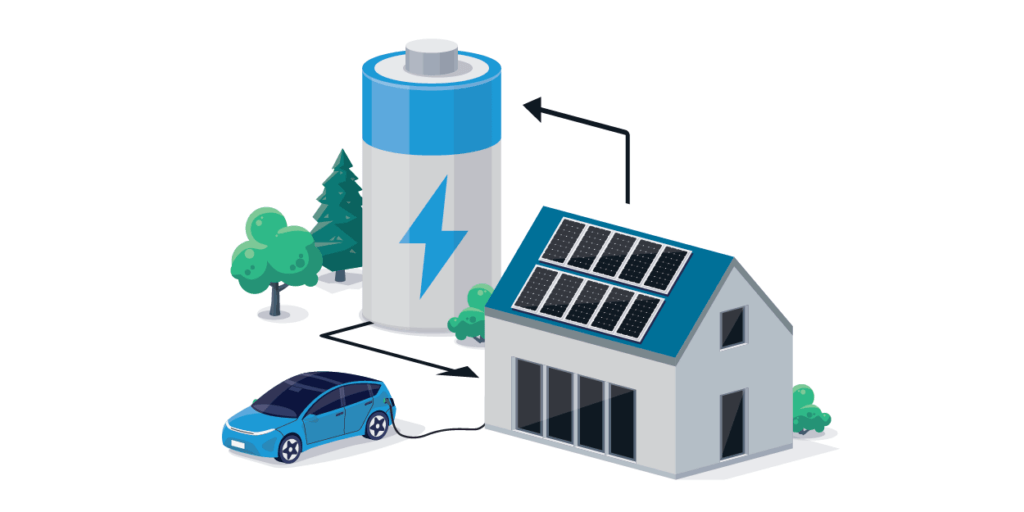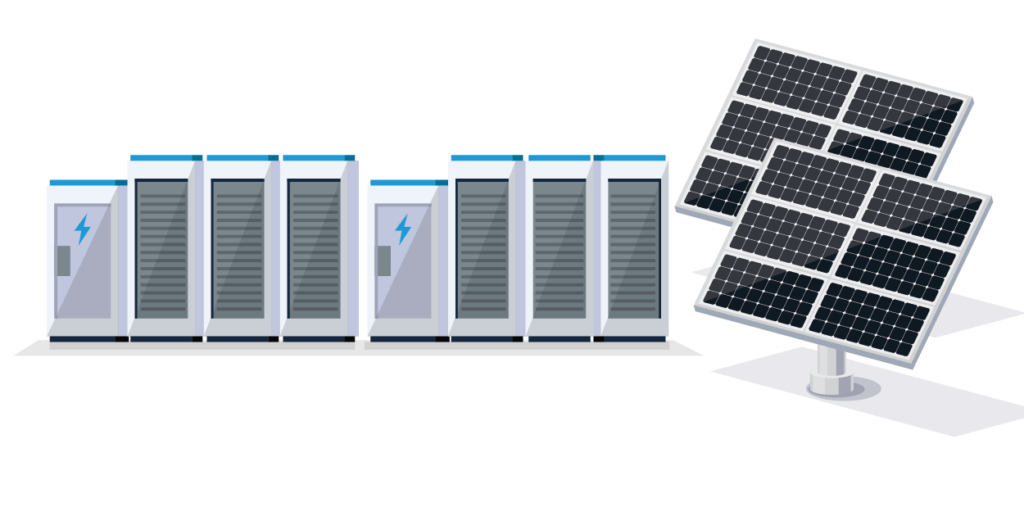
Energy storage is an extremely important part of society’s operations. If devices are not plugged into an outlet, they run the ability to store energy through batteries. Some are rechargeable, some are not, but they are all continually making strides in efficiency and productivity.
Battery: a container consisting of one or more cells, in which chemical energy is converted into electricity and used as a source of power.
Energy storage systems have come a long way and have become an integral part of several industries worldwide, including the solar energy industry! In 2017, only 2.8% of solar installations included storage systems. That number jumped to 11.2% in 2021, and is estimated to continue to grow, with 2025 estimates at 29.3%.
Energy storage solutions have been studied for centuries, and it is only getting better for homeowners. Read to learn more about the development, research, and advancements of batteries.

How Batteries Work
Solar batteries store energy to be used later.
Solar panels produce energy from the sun, and the electrical current flows to an inverter to become usable. This energy powers home appliances as much as necessary, and any extra energy is used to charge the battery. When the sun goes down, the battery’s charge is used to continue powering household appliances.
Ancient Battery Usage
The first reference of the word “battery,” describing energy storage, was in 1749, when Benjamin Franklin discovered electricity. Though this is widely acknowledged as the first use of energy storage systems, some archaeologists theorize it was first utilized in Baghdad over 2,000 years ago.
Discovered in modern day Iraq, an artifact was unearthed consisting of a ceramic jar, a tube of copper, and an iron rod. Research indicates it was filled with an acid and used as a battery for electroplating gold into other types of metals. This theory is widely argued, some scientists say there is no evidence of electroplated gold from the era. However, those who believe the theory claim there is no evidence against it, either, because all gold pieces in museums are only assumed to be solid gold. No one has or likely will dissect an ancient piece of history. No matter what the truth indicates of ancient Baghdad and the early days of batteries, the concept of energy storage and home storage solutions continues to advance.

The First Batteries
Bringing the scope a bit closer to present day, Pieter van Musschenbroek developed the Leyden jar, which was a glass jar coated in metal and brass elements. The jar stored electricity until it was given a discharge path. It was not a consistent flow of electricity, so many regard it as the first true battery. Alternatively, Alessandro Volta’s 1800 invention of the voltaic pile is more commonly given the title and recognition.
Volta’s invention was built from copper and zinc discs stacked and separated by a damp cloth soaked in brine. The brine provided an electrolyte between the different metals, and this helped produce different voltages throughout the pile. Positively charged ions capture electrons from the copper, the zinc becomes a negative electrode, and the copper a positive electrode. With those two terminals, an electric current could easily flow if the two were connected.
Continued Progress
The voltaic pile was an incredible springboard for other scientists, innovators, and theorists to advance technology between 1800-1900’s.
- 1801 – Nicolas Gautherot experimented with wires used in electrolysis experiments and observed the wires provided a small amount of “secondary” current after being disconnected from the main power source.
- 1859 – The first rechargeable battery, the lead-acid battery, by French physicist Gaston Planté originated. Though these batteries have relatively low energy density in comparison to other storage options available today, lead-acid batteries are still in use. They are inexpensive, can supply high surge currents, and the cells have a large power-to-weight ratio. Large lead-acid batteries are commonly used as backup power supplies in cell phone towers, emergency power systems, and stand-alone home power storage systems.
- 1883 – Charles Fritz created the first solar battery charger.
- 1899 – The nickel-cadmium battery was developed by Waldemar Jungner in Sweden. Jungner took the lead-acid battery and tested different metals against it, attempting to improve energy density. After successfully deciding on nickel and cadmium, he built factories in 1906 to largely manufacturer these products, although this did not begin production in the United States of America until 1946. These batteries are considered incredibly important to the development of the batteries used today.
- 1901 – Shortly after Jungner’s nickel-cadmium battery, Thomas Edison invented the alkaline storage battery. This alkaline cell had iron as the negative electrode and nickel as the positive electrode. Though he was intending to incorporate these into automobiles, they were better suited for railroads because they could handle being overcharged and undercharged frequently.

Present Day Energy Storage System Solutions
The most important advancement was the invention of the lithium-ion battery. Lithium batteries were originally experimented with at the beginning of the 1900’s by Gilbert Newton Lewis, but it wasn’t until later his experiment was involved in success: John Goodenough’s 1980 discovery of the lithium cobalt oxide cathode; Rachid Yazami’s 1982 discovery of the graphite anode; and Asahi Chemical, Japan’s prototype of a rechargeable lithium battery were necessary developments before a lithium battery could be commercialized. Sony sold the first commercial lithium-ion batteries in 1991.
Lithium-ion batteries, today, are used in wheelchairs, laptops, household appliances, power tools, and more, including many solar energy storage systems.
Solar technology and energy storage systems continue to advance, becoming more reliable for homeowners with rooftop systems. Providing energy independence, additional savings, and more protection from rising utility costs, energy storage systems can be a great addition to your solar panels.
Energy Storage Systems from Blue Raven Solar
Blue Raven Solar now offers energy storage. Offering a home storage solution was long-awaited and it has opened new doors for our organization and our customers. With solar batteries, customers can increase the efficiency of their systems, save more money, and experience more energy independence.
Energy storage systems are powered by lithium-ion batteries and an advanced inverter, allowing more charge cycles than other storage systems and proving to be an efficient addition for homeowners. The battery charges by collecting excess energy the system produces and puts it aside to use when the sun is not shining or there is a power outage. These batteries can charge while simultaneously powering your home, so you can see even more benefits from being efficient with your energy usage.
Solar energy storage systems are a product of centuries of research, development, and brilliance coming together to create different types of batteries.
Blue Raven Solar is excited to offer our customers different energy storage systems and to bring more savings to homeowners across the country.
Find out how much you can save with a Solar + Storage system today!



Sorry, the comment form is closed at this time.